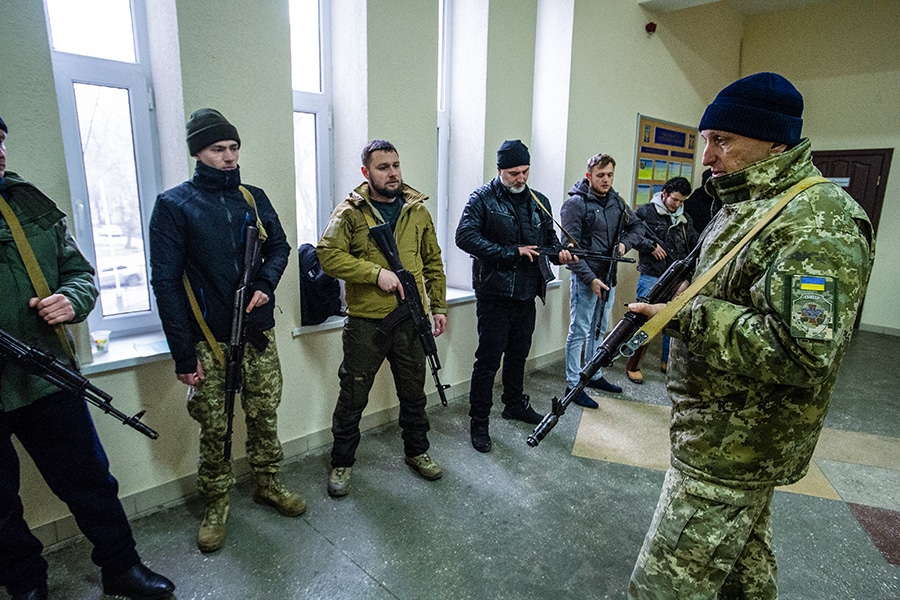
Ukrainian troops hold Russian assault at bay—for now
They are outgunned and outnumbered by Russia's military might, but Ukrainian troops and civilians have managed to slow, if not stop, Putin's plan of quick destruction
Image: Scott Peterson/Getty Images An instructor discusses urban combat as Ukrainian civilians undergo basic military training at a volunteer center in a state educational institution, before an expected Russian assault on March 5, 2022 in Odessa, around 132 kms East of Mykolaiv, Ukraine. The Ukrainian volunteers are trained by former, reserve and veteran Ukrainian officers. Russian forces invading Ukraine from three sides since February 24 have frequently met fierce resistance, and these trainees say they aim to help deprive Russia of the prized Black Sea port of Odessa.
An instructor discusses urban combat as Ukrainian civilians undergo basic military training at a volunteer center in a state educational institution, before an expected Russian assault on March 5, 2022 in Odessa, around 132 kms East of Mykolaiv, Ukraine. The Ukrainian volunteers are trained by former, reserve and veteran Ukrainian officers. Russian forces invading Ukraine from three sides since February 24 have frequently met fierce resistance, and these trainees say they aim to help deprive Russia of the prized Black Sea port of Odessa.
MYKOLAIV, Ukraine — The remains of a Russian Tigr fighting vehicle sat smoldering on the side of the road, as Ukrainian troops lounged outside their trenches smoking cigarettes. Nearby, a group of local villagers was tinkering with a captured T-90 tank, trying to get it running again so that the Ukrainian army might use it.
For three days, Russian forces had fought to take Mykolaiv, but by Sunday, Ukrainian troops had driven them back from the city limits and retaken the airport, halting the Russian advance along the Black Sea, at least temporarily. By Monday morning, Russian forces had resumed their attack.
“Few expected such strength from our people because, when you haven’t slept for three days, and when you only have one dry ration because the rest burned up, when it’s negative temperature out and there is nothing to warm you, and when you are constantly in the fight, believe me, it is physically very difficult,” said Col. Sviatoslav Stetsenko, of the Ukrainian army’s 59th Brigade. “But our people endured this.”
Taking Mykolaiv remains a key objective for Russian forces, and the thwomp of artillery in the distance Sunday suggested that the Ukrainians had not pushed them back that far. But the unexpected Ukrainian success of defending this critical port, about 65 miles from Odesa, underscores two emerging trends in the war.
©2019 New York Times News Service







